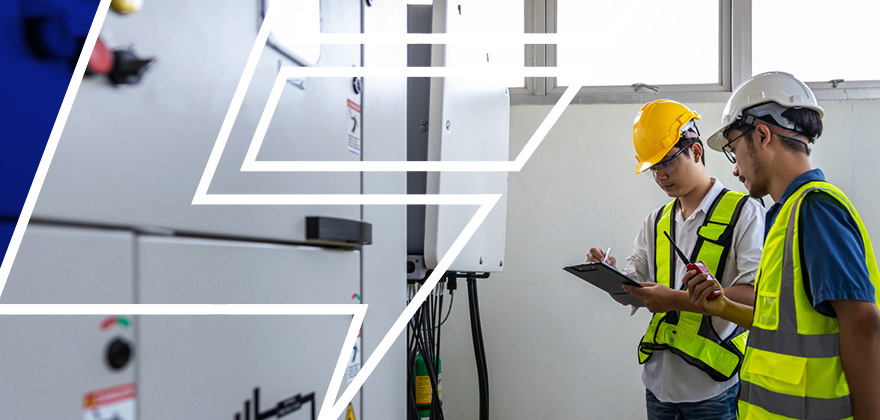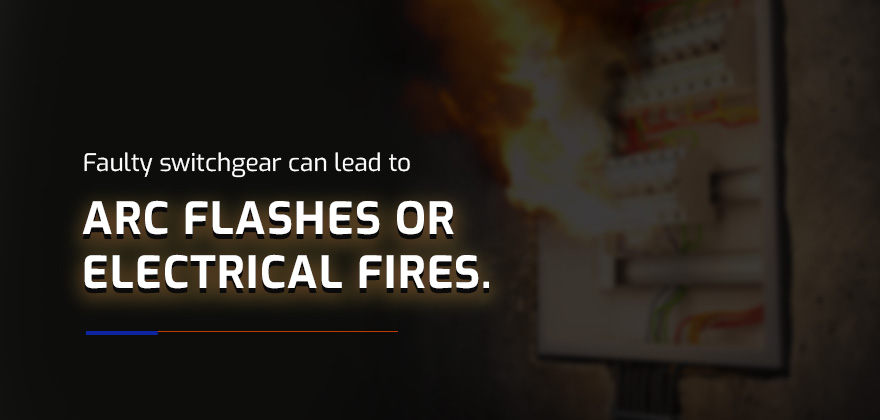5 Questions to Ask Before Replacing or Upgrading Switchgear

A switchgear system keeps electrical systems running safely and efficiently. If you’re considering a replacement or upgrade, you likely have concerns. Making the right decision requires a clear idea of your system’s needs, potential challenges and the best solutions available.
Learn the questions to ask before moving forward with a switchgear upgrade or replacement.
1. Why Do I Need to Replace Or Upgrade My Switchgear?
Whether you’re managing a commercial facility or maintaining your home’s electrical system, replacing or upgrading your electrical switchgear is a major decision. Consider why you might need a replacement in the first place.
Frequent Breakdowns
If your switchgear is constantly tripping or failing, it’s a sign that your system is struggling to keep up with demand. Think about how often you or your maintenance team need to reset breakers, replace fuses or troubleshoot electrical failures. Every repair comes with labor costs, material expenses and downtime. These recurring issues may add up to a cost that exceeds the price of a switchgear upgrade.
Safety
Faulty switchgear can lead to arc flashes or electrical fires. If you’ve ever experienced a breaker that keeps ripping or a panel that feels warm to the touch, your switchgear could be struggling to manage electrical loads safely. Upgrading your system can provide a safer working environment.

Unavailability of Parts and Age
One of the challenges with aging switchgear is finding replacement parts. Manufacturers may no longer support older models, which makes it difficult to find compatible components when something breaks.
Most switchgear systems have a life span of 20 to 30 years, but that doesn’t mean they’ll operate optimally for the entire duration. Aging switchgear often exhibits subtle warning signs before it becomes a major problem. You might notice unexplained power fluctuations or tripping of circuit breakers. These are typically early indicators of weakening internal components. If not addressed, they may lead can lead to more frequent outages.
Technology
Modern switchgear can integrate with smart grids, allowing for monitoring of power consumption, fault detection and predictive maintenance. These features improve efficiency and system reliability by identifying issues before they lead to failures. Newer switchgear also supports better coordination between circuit protection devices, isolating faults to reduce the risk of widespread outages.
2. What Is the Capacity of My Switchgear?
Before replacing or upgrading your switchgear, you need to assess whether your current system is operating at or near its capacity. When your switchgear operates within its rated capacity, it manages power distribution to protect your electrical network from faults, overloads and short circuits. However, when it nears or exceeds its maximum capacity, overheating, voltage drops and frequent tripping can occur.
So, how do you assess the capacity of your switchgear? Be on the lookout for frequent trippings of breakers, heat or voltage fluctuations. If you’re having difficulty determining the capacity, you can consult with a professional. They’ll provide a thorough evaluation with advanced tools to detect overload issues and provide solutions for your needs.
3. Do I Have Enough Switchgear Room?
Switchgear size and configuration must align with the available space for safe operation and ease of maintenance. Before proceeding with a switchgear upgrade, check whether your existing space can accommodate the new equipment. Here’s how to evaluate accessibility:
- Measure the available footprint: Check the manufacturer’s specifications for the dimensions of your new switchgear. Compare it with your current switchgear to see if there’s enough space for installation.
- Assess doorways, hallways and obstacles: Measure entry points leading to the switchgear room to confirm that the new equipment can fit through them. You should also identify potential obstructions that could hinder installation.
- Check the electrical room layout: Provide clearance to ease access and ensure safe operation. Additionally, check proximity to other electrical components. If your new switchgear is larger or has a different configuration, it may interfere with adjacent panes, conduits or grounding systems.
4. Do I Need to Replace My Existing Cables and Conduits?
Electrical infrastructure is often built to last for years, but that doesn’t always mean older cables and conduits are compatible with new switchgear technology. Reusing them may save costs and reduce installation time, but only if they meet safety and performance standards. If you want to use existing switchgear cables and conduits, check the ratings of your current cables and compare them with the specifications of the new switchgear. New cables will be required for wiring that meets the necessary capacity.
Even if your current cables are rated for the new switchgear, their condition may affect their usability. If they show signs of wear or damage or they’ve been exposed to heat, moisture or chemicals, it’s safer to replace them. The cables must also fit within the existing conduits. If conduits are too small or deteriorated, it’s best to install new conduits.
5. What Are the Costs Involved?
The price of a switchgear varies depending on the type, voltage rating and complexity. Here are some factors that contribute to the total cost:
- Switchgear cost: Basic low-voltage switchgear for small commercial or residential applications may cost a few thousand dollars, while larger industrial-grade options may reach premiums.
- Engineering and design: Before installation, switchgear must be properly designed and engineered to meet the electrical system’s demands.
- Installation and labor costs: Labor costs depend on project scope, location and accessibility. Installation includes cabling, mounting and system testing. Some technicians train your personnel on how to use the system.
Frequently Asked Questions
What is a switchgear, and how does it work? When should you test your switchgear? Here are some of the most common questions related to switchgear and their answers.
What Is Electrical Switchgear?
Switchgear is a component of an electrical system that consists of circuit breakers, fuses, relays and switches housed within an enclosure. When a fault occurs, the switchgear detects the issue and automatically disconnects the affected circuit to prevent damage to equipment. It also allows for manual operation so technicians can safely maintain or repair electrical systems.
What Does Switchgear Do?
Switchgear distributes power and protects residential and commercial electrical systems. These systems regulate power flow, prevent faults from spreading and enable controlled switching of electrical loads.
How Often Should Switchgear Be Tested?
Switchgear should be tested annually. However, the frequency depends on usage and environment. Testing includes visual inspection, insulation resistance tests and contact resistance measurements to verify the switchgear is operating as expected.
Contact Lippolis Electric for Switchgear Replacement or Upgrade Services

At Lippolis Electric, we’ve been providing electrical services in Westchester, Putnam and Dutchess counties for over 40 years. Our family-owned and operated business is built on trust, reliability and customer satisfaction. Our trained electricians stay up to date with the latest industry standards to provide safe and long-lasting solutions.
We also offer competitive pricing, prompt response times and meticulous workmanship, and we can handle various job requirements. Our team works neatly and minimizes disruptions to your home or business. Contact us today to replace or upgrade your switchgear.
Schedule service
Please note that your appointment is not set until confirmed by Lippolis Electric shortly after you've submitted the form.
| ‹ | › | |||||
| Sun | Mon | Tue | Wed | Thu | Fri | Sat |
